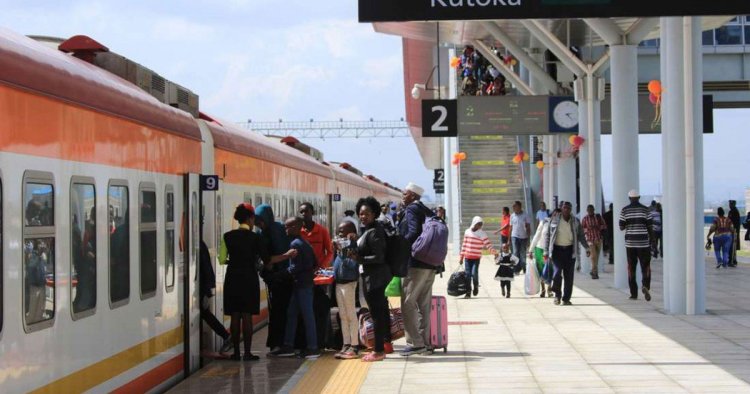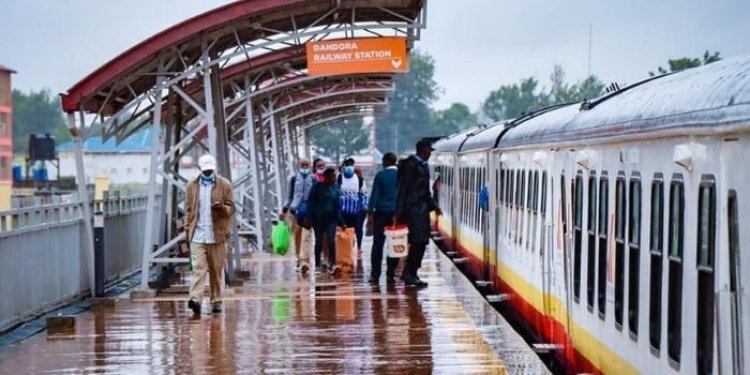8 Safety Tips While Boarding & Alighting Trains- Kenya Railways
KRC's guidelines also apply to employees, partners and the general public on and around the trains.

Using a train for daily travel in Kenya has become a mainstream means of transport for those needing to beat traffic jams to get to their workplaces as well as going from county to county. However, there are measures the Kenya Railways Corporation (KRC) has stipulated to ensure passengers' safety.
The guidelines announced on Monday, February 19 deal with personal safety when boarding and disembarking from trains, aiming to enhance the efficiency and safety of its systems.
They are not just applied to passengers. KRC's guidelines also apply to employees, partners and the general public on and around the trains.
Viral Tea takes a look at the eight guidelines:
Stand behind the yellow line until the train comes to a complete stop.
The purpose of the yellow line is to prevent passengers from crossing the line and getting too close to the edge of the platform. This helps to reduce the risk of accidents such as passengers falling onto the tracks, being hit by a train, or being caught in the gap between the platform and the train.
Train stations can be dangerous and with any heavy vehicle movement, there’s a risk if the appropriate behaviours are ignored or not followed. The yellow line exists as a visual reminder that by crossing that line, you are putting yourself and potentially others at risk.

Kenya Railways station at Dandora, Nairobi. /FILE
Do not force the doors open or attempt to board when the train is leaving the platform.
Most trains have automatic doors that cannot be reopened no matter what happens, which means you have to wait for your next train.
Similarly, attempting to board when the train is leaving the platform is considered dangerous and despite what movies might trick you into believing, being on top of a train is the same as riding on top of a car.
You are already moving at the same speed as the train, so you should not be phased by the movement as long as the train does not brake or accelerate extremely abruptly.
Allow other passengers to step off the train before you board.
This ensures a smooth transition between those boarding and those alighting, reducing time wastage during round trips.
It also prevents cases of collision and falling among passengers, which can pose serious consequences.
Station attendants and train crew will assist passengers with special needs to board the train.
Station attendants, these days undergo training on how to handle people with disabilities, who in turn are given priority status anytime they board a train.
If you are travelling with a pram or shopping trolley, board at the front carriage so that you're clearly visible to the driver.
Passengers with heavy luggage are subject to specific guidelines set by train operators, including pointers on getting off and on the train, and ensuring utilization of spaces allocated for heavy luggage.
When boarding the train enter the pram first and lift the back in if the train isn't level with the platform.
When exiting the train, step off first and then pull the pram towards you.
These processes ensure there is stability, even distribution of weight on the pram prevents trips and falls, and further prevent the pram from rolling away when exiting the train
Use the grab rails to steady yourself when boarding or alighting.
Grab rails are strategically placed to help passengers comfortably board and alight trains, by giving them stability, especially in cases of frail platforms placed on train doorways.
At any given notice the train can start moving, which can catch boarding and alighting passengers by surprise.
Prepare to alight before reaching your destination station, but make sure you have something to hold onto.
This proactive approach helps minimise time wastage at various drop-off points. However, passengers should ensure they have something to hold onto to maintain balance when the train comes to a halt.
According to the Kenya Railways Corporation Act, individuals travelling in any part of a train, vessel, or vehicle other than areas typically designated for passenger use while travelling, whether with or without permission, are not eligible for compensation in the event of an injury or accident involving the train.
"The Corporation shall not be liable for the loss of life of, or for personal injury to, any passenger except where the loss of life or personal injury is caused by the want of ordinary care, diligence or skill on the part of the Corporation or of any employee," the Act reads in part.
With minor accidents involving trains reported, this makes train transport one of the safest means of transport.
To maintain this record, Kenya Railways encouraged members of the public to employ the outlined guidelines and to further reduce cases of accidents and delays while using the train system in the country.







